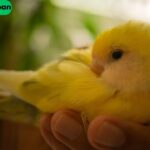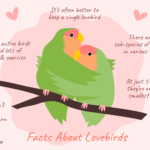Cockatoos are larger, more vocal, and often more demanding pets than cockatiels. Cockatiels are smaller, generally quieter and easier for beginners to manage.
When considering a feathered companion, prospective pet owners often weigh their options between cockatoos and cockatiels. Each bird sports a distinctive crest and a variety of color patterns, but their similarities largely end there. Cockatoos, with their impressive size and captivating personalities, are known for their strong bonds with owners but require significant attention and stimulation.
They can be quite the performers and demand a hefty time investment for social interaction. On the other hand, cockatiels are renowned for their manageable size, softer chirping, and are typically better suited for those new to bird keeping. These sweet-natured birds offer companionship without the intensity of their larger counterparts, making them a popular choice for families and individuals seeking a less demanding pet. Choosing the right bird depends on the owner’s lifestyle, time availability, and experience with birds.
Distinctive Traits Of Cockatoos
Distinctive Traits of Cockatoos present a fascinating world of avian features and characteristics. These birds exhibit a range of attributes that set them apart from their close relatives, such as cockatiels. Understanding these traits can enlighten potential bird owners and enthusiasts on what makes cockatoos uniquely captivating.
Physical Attributes
Cockatoos are easily recognizable by their dramatic crests and curved beaks. Unlike cockatiels, cockatoos boast a variety of sizes, with some species reaching an impressive two feet in length. Their plumage is primarily white, grey, or black, with some species displaying touches of color. Unique to these birds are their zed feet (two toes forward and two back), enabling superior climbing abilities.
| Feature | Description |
|---|---|
| Crest | Large and noticeable |
| Beak | Strong, curved |
| Size | 12 to 24 inches |
| Plumage | White, grey, black with color spots |
| Feet | Zygodactyl, good for climbing |
Behavioral Characteristics
Notorious for their strong personalities, cockatoos exhibit a range of emotions and high intelligence. They require constant attention and engagement to mitigate behavioral problems. Unlike cockatiels, cockatoos can develop a deep bond with their owners, making them sensitive to changes in their environment.
- Highly affectionate
- Need for frequent social interaction
- Prone to boredom
- Sensitive to environment
Communicative Features
Cockatoos are vocal performers, known for their loud calls and ability to mimic sounds. Their vocalization serves as a means to express needs or interact with their human companions. With consistent training, some cockatoos develop an impressive repertoire of words and phrases, surpassing the cockatiel’s abilities.
- Loud and clear vocalizations
- Capability to mimic human speech
- Use sound to express emotions
- Can learn words and phrases
Unraveling The Mystique Of Cockatiels
Welcome to a journey into the enchanting world of cockatiels. These feathered charmers capture hearts with their unique personalities and captivating features. Get ready to discover what makes cockatiels a beloved pet for bird enthusiasts around the globe.
Physical Appearance
Cockatiels stand out in the avian crowd thanks to their distinctive crests. The crest’s position often signals their mood—upright for alert, flattened when relaxed or angry. Their elegant plumage varies widely, from classic grays to vibrant lutinos. Each cockatiel carries a mask-like facial pattern, which gives them an expressive look.
| Feature | Description |
|---|---|
| Size | Smaller than cockatoos, approximately 12-13 inches in length. |
| Weight | Typically weighs around 3 ounces. |
| Color Variations | Includes gray, white, yellow, and pied patterns. |
| Life Span | Can live up to 20 years with proper care. |
Social And Behavioral Tendencies
Cockatiels are social birds, thriving on interaction with their owner or other birds. They form strong bonds and often seek affection. Known for their gentle disposition, they’re a suitable choice for families with children. Explore their playful antics and tender companionship qualities to understand why many prefer these feathered friends in their homes.
- Enjoy head scratches and cuddles
- Can learn tricks with positive reinforcement
- Prefer routine and a structured environment
Vocalization And Sounds
Cockatiels are not just visually appealing, but also a delight to the ears. Their vocalizations range from soft chirps to complex melodies. They can mimic household sounds and, occasionally, even words. While they’re not as vocally talented as their larger cockatoo cousins, a well-socialized cockatiel will enjoy whistling and singing along with their human companions.
- Whistles and chirps are their primary sounds
- May mimic doorbells, alarms, and ring tones
- Courting males exhibit more elaborate vocal displays
Habitat Requirements For A Healthy Bird
Whether you’re a seasoned bird enthusiast or a curious newcomer, understanding the habitat needs of cockatoos versus cockatiels is crucial. Each species thrives in environments that mimic their natural habitats. Ensuring these feathered friends live in a comfortable, engaging, and safe space is a cornerstone of their well-being. Let’s dive into what makes a habitat ideal for these charming birds.
Cage Size And Environment
Cockatoos and cockatiels need spacious cages to spread their wings and exercise. The cage size for a cockatoo should be at least 36 inches in width, depth, and height. For a cockatiel, a cage measuring 20 inches by 20 inches by 24 inches will suffice. The environment inside the cage should replicate the bird’s natural surroundings with perches and space to climb.
Essential Accessories
- Perches of varying sizes and textures to keep their feet healthy.
- Chew toys to satisfy their need to gnaw and stay mentally engaged.
- Feeding bowls and water dispensers, ensuring they are easily accessible.
- A birdbath or misting bottle can offer a way for birds to clean their feathers.
Temperature And Humidity Control
Maintaining adequate temperature and humidity levels is vital. Cockatoos and cockatiels prefer temperatures between 65 and 80 degrees Fahrenheit. Good ventilation helps prevent respiratory issues. To manage humidity, maintain levels ranging from 40% to 70%. Devices like humidifiers or dehumidifiers can help stabilize the environment. Monitoring these conditions with a thermometer and hygrometer ensures birds remain happy and healthy.
Diet And Nutrition Essentials
Understanding the diet and nutrition essentials for your feathery friends is crucial to their health and happiness. Cockatoos and cockatiels have different dietary needs that must be carefully met. A well-balanced diet ensures these beautiful birds thrive in their home environments. Let’s explore the essentials needed to keep your cockatoo or cockatiel in tip-top shape.
Balanced Dietary Needs
Both cockatoos and cockatiels require a variety of foods to fulfill their nutritional requirements. Here is a basic guide:
- Fresh fruits and vegetables: These should be washed and cut into manageable pieces.
- Pellets: Choose high-quality, species-specific pellets that cater to their dietary needs.
- Seeds: While seeds can be part of their diet, they should not be the main component.
- Grains and legumes: Include cooked brown rice, quinoa, and lentils for variety and nutrition.
Treats And Toxic Foods To Avoid
Treats should be given in moderation. Avoid these toxic foods:
| Toxic Food | Reason to Avoid |
|---|---|
| Avocado | Contains persin, which is harmful to birds. |
| Chocolate | Theobromine and caffeine are dangerous for birds. |
| Onions and Garlic | Can cause digestive and blood problems. |
Supplements For Optimal Health
Supplements may be necessary to ensure your bird is getting all the nutrients it needs:
- Vitamin A: For a healthy immune system and good vision.
- Calcium: For strong bones and beak health.
- Vitamin D3: Particularly if your bird has limited exposure to sunlight.
Consult a vet before adding supplements to your bird’s diet.
The Social Life Of Cockatoos Versus Cockatiels
Exploring the vibrant social lives of birds unlocks a world of wonder, particularly when comparing cockatoos and cockatiels. These charming birds enthral pet owners with their distinct personalities. But how do they behave socially? Understanding the nuances in their social interactions provides insights into their unique needs and behaviors.
Attachment And Bonding
Cockatoos are renowned for their intense bonds. Often forming deep attachments, they require substantial attention from their owners. Without it, they may develop behavioral issues. Cockatiels, while also affectionate, display a more independent streak.
Interactions With Other Birds
Cockatoos can be quite sociable with their feathered friends, but may show dominance in mixed flocks. Cockatiels are more democratically inclined, often enjoying the company of various bird species with lesser conflict.
Human-bird Relationship Dynamics
Cockatoos seek deep connections and can often mimic human speech, forging strong bonds with owners. Cockatiels value human companionship as well, but peak with whistle tunes and modest vocal expressions.
| Bird Type | Attachment Level | Inter-Bird Interaction | Human Interaction |
|---|---|---|---|
| Cockatoo | High | Can be dominant | Deep connections, mimic speech |
| Cockatiel | Moderate | Social, less conflict | Enjoy companionship, whistle tunes |
Training And Mental Stimulation
Training and mental stimulation play crucial roles in the well-being and development of both Cockatoos and Cockatiels. Like young children, these birds need regular mental challenges. This not only keeps their minds sharp but also strengthens the bond between you and your feathered friend. Discover the joy of teaching your bird new tricks and games that engage their intelligent nature.
Begin with simple commands to get your bird’s attention. Use treats as rewards for successful attempts. Below is a breakdown of how to advance in training:
- Step-up Command: This is your starting point, coaxing the bird to step onto your hand.
- Target Training: Teach your bird to touch a stick or your hand with its beak.
- Wave: Encourage your bird to mimic a waving motion with its foot.
Engage your bird’s mind with exercises that promote thinking. Try these fun activities:
| Game | Benefits |
|---|---|
| Puzzle Toys | Improves problem-solving skills |
| Hide and Seek | Enhances object permanence awareness |
| Foraging | Mimics natural food searching behavior |
Puzzle toys can hide treats, requiring your bird to figure out how to retrieve them. Hide and Seek strengthens recall skills, while foraging activities replicate natural behaviors.
A bored bird is often a mischievous bird. Prevent undesirable behavior by keeping your bird’s day full of variety:
- Change toys frequently to maintain interest.
- Introduce new foods and textures to explore.
- Rotate perches and rearrange the cage layout.
Regular interaction and varied routines fend off boredom. Include these practices daily for a happy, healthy bird.
Healthcare And Common Ailments
Understanding the healthcare needs and common ailments is crucial for any pet owner. Choosing between a cockatoo and cockatiel brings its own set of healthcare considerations. While both birds share some similarities in their care, there are distinctive differences in their healthcare requirements and vulnerability to certain illnesses.
Regular Vet Checkups
Regular visits to an avian veterinarian are essential for all pet birds. Annual checkups help maintain bird health and catch any issues early. For cockatoos and cockatiels, these visits might include weight checks, parasite screenings, and nutritional assessments to ensure they are at their peak health.
Recognizing Signs Of Illness
Cockatoos and cockatiels often hide their illnesses well. Vigilance in observing unusual behavior is key. Signs to watch for include:
- Ruffled feathers for extended periods
- Changes in eating or drinking habits
- Sudden weight loss or gain
- Discharges from the nose or eyes
- Abnormal droppings in terms of color, consistency, or frequency
Preventive Care Strategies
Preventing illness is better than treating it. Simple preventive measures can go a long way. Include the following in your care routine:
- Clean living space: Keep cages and perches clean.
- Proper diet: Ensure a balanced diet with fresh fruits and vegetables.
- Exercise: Allow time for daily play and flight.
- Mental stimulation: Provide toys and interaction to ward off stress.
Regular preventive care minimizes the risk of common ailments and contributes to a happier, healthier life for your pet bird, whether you choose a cockatoo or a cockatiel.

Credit: www.amazon.com
Making The Decision: Cockatoo Or Cockatiel?
Choosing between a cockatoo and a cockatiel is like picking between a joyous parade and a serene melody. Both birds beam with unique personalities and captivating charm, yet their differences can greatly influence your overall pet-owning experience. Let’s peck into the considerations to help you decide which feathered friend matches your life best.
Consider Your Lifestyle
First, think about your daily routine. Cockatoos are like having a toddler; they crave constant attention and interaction. Their needs can be demanding. On the wingtip, cockatiels are more independent, perfect for the busy bird lover.
Long-term Commitment
Lifespan is key. Cockatoos can share your nest for up to 60 years, so they’re a lifelong buddy. Cockatiels provide companionship for about 20 years. Consider how a feathered companion fits into your future plans.
Cost Of Ownership
| Expense | Cockatoo | Cockatiel |
|---|---|---|
| Initial Setup | Higher | More Affordable |
| Care Supplies | Costly | Less Expensive |
| Medical Care | Potential for High Costs | Generally Lower |
Analyze your budget. Cockatoos come with a heftier price tag – think bigger cage, more food, and possible vet bills. Cockatiels are lighter on the wallet, making them ideal for the cost-conscious pet parent.
Responsible Pet Ownership
Deciding between a cockatoo and a cockatiel is more than choosing a feathered friend. It is a commitment to nurturing and understanding the needs of a complex creature. Both birds require time, patience, and education from their human companions. Let’s uncover the layers of responsible pet ownership for these avian companions.
Adoption Vs. Purchase
Bringing a bird into your home requires a crucial decision. Will you adopt or purchase? Adoption often gives a second chance to birds needing homes. It can also support rescue organizations in their mission. Purchasing, on the other hand, may offer you the opportunity to raise a bird from a young age. Whichever route you choose, ensure it’s an informed and ethical decision.
- Research the source of your potential pet.
- Understand the care requirements and history of the individual bird.
Supporting Conservation
Some species of cockatoos are endangered. Choosing a cockatiel or cockatoo impacts bird populations worldwide. By selecting a bird from ethical breeders or rescues, you support conservation efforts.
| Bird | Conservation Status |
|---|---|
| Cockatoo | Varies by species |
| Cockatiel | Least Concern |
Community And Support Resources
Responsible pet ownership involves a community. Seek out support from bird enthusiasts, clubs, and online forums. They can offer valuable advice for care and enrichment activities.
Here’s how to tap into support resources:
- Join local or national bird-keeping societies.
- Attend bird shows and talks to learn and connect.
- Follow veterinarian-approved online resources.

Credit: www.somerzby.com.au
Real-life Stories From Cockatoo And Cockatiel Owners
Welcome to the captivating world of pet birds, where cockatoos and cockatiels reign supreme. Owners of these charming creatures share their tales, painting a vivid picture of life with these feathered friends. From fluttering feathers to heartfelt chirps, discover the shared joys and hurdles straight from the bird keepers’ nests.
Successes And Challenges
Every bird owner has a story to tell, and these accounts often feature both milestones reached and obstacles faced. Cockatoos are known for their intelligence but can be a handful due to their need for attention and mental stimulation.
- Tilly the Cockatoo mastered over 20 tricks, a true testament to her owner’s dedication.
- Sam the Cockatiel had a rocky start with his quiet owner but eventually bloomed into a vocal, social companion.
Contrasting these tales, some owners grapple with behavioral issues. Owners recount the challenge of dealing with a cockatoo’s loud screech or a cockatiel’s stubbornness.
Bonding Experiences
Dedicated bird owners often revel in the deep connections formed with their pets. Stories of bonding abound, with many owners outlining special rituals that have brought them closer to their birds.
Morning songs with Jasper the Cockatiel or evening games of peekaboo with Coco the Cockatoo highlight the unique personalities of these birds. Enriching interactions such as learning new words or cuddling up during movie nights become cherished moments.
Life With A Feathered Companion
Living with a cockatoo or cockatiel is an enriching experience filled with memorable moments. Owners share tales of their birds’ quirks, like how a cockatoo might insist on sharing breakfast or a cockatiel’s fascination with mirrors.
Everyday life with these birds means adjusting to their schedules – ensuring timely meals, cleaning cages, and providing enrichment. Yet, the joy they bring surpasses the effort involved in their upkeep.
Take, for example, George the Cockatiel, who greets his owner every day without fail or Luna the Cockatoo, whose dance moves never fail to entertain guests.

Credit: www.petco.com
Conclusion
Deciding between a cockatoo and a cockatiel depends on your lifestyle and preferences. Both birds offer unique qualities sure to enchant any bird enthusiast. Remember, cockatoos thrive on attention, while cockatiels prefer a more low-key bond. Consider space, time commitment, and social needs before making your choice.
Whichever feathered friend you choose, a rewarding companionship awaits.
Ryan Everhart is a passionate bird enthusiast and blogger, primarily writing on his website, Avian Whispers. His journey into the world of bird blogging began with a deep interest in parrots, a species that captivated his attention for their intelligence and social behavior. Over time, his content expanded to cover a broader range of bird species, offering insights into bird behavior, care, habitats, and conservation.
Ryan is dedicated to educating his audience, which includes both new bird owners and seasoned enthusiasts. His writing is filled with personal experiences, expert knowledge, and practical advice on bird care. Through Avian Whispers, he aims to foster a deeper appreciation for birds, emphasizing their role in nature and the joys of having them as pets.
Starting with articles focused on parrots, Ryan’s work now encompasses a diverse range of topics such as feeding, training, habitat enrichment, and bird health. His love for birds extends beyond parrots, diving into various avian species. His informative and heartfelt writing reflects his commitment to the well-being of birds and the desire to help others connect with these creatures.
As a growing voice in the bird blogging community, Ryan strives to provide a platform where bird lovers can learn, share experiences, and connect over a shared passion for avian life. His blogs are not only educational but also serve as a reminder of the importance of protecting and nurturing the bond between humans and birds.




